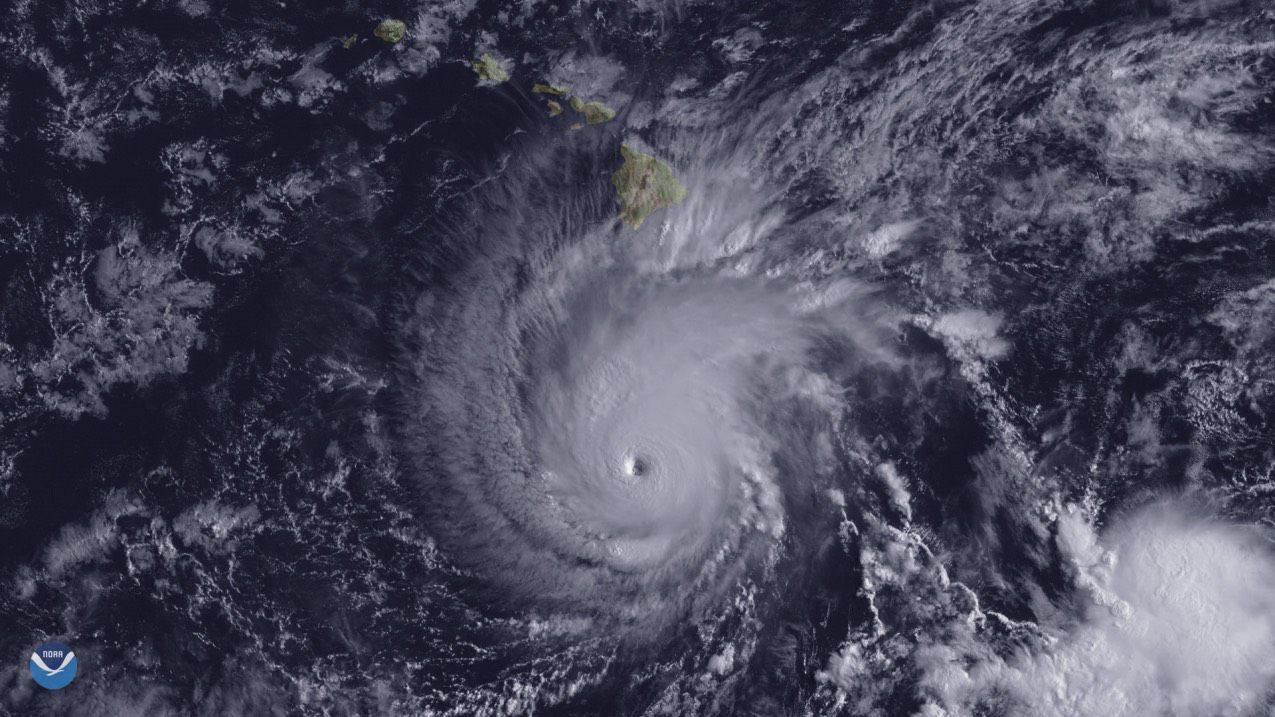HONOLULU — With the start of the Central Pacific Hurricane Season on Thursday, Hawaiian Electric is reminding its residential and commercial customers to be prepared for what is projected to be a potentially dynamic season in the region.
Due to El Nino conditions, the Central Pacific Hurricane Center forecast a “near-to-above-normal” season with four to seven tropical cyclones predicted for the region. That includes all hurricanes, named storms and tropical depressions, regardless of whether they make landfall.
The utility encourages customers to develop their own emergency plans and consider the following tips:
- Gather emergency supplies, such as a battery-powered radio, flashlights, lanterns and batteries. Be prepared to monitor communications over emergency broadcast radio stations.
- Store enough water, non-perishable food, medicine and personal hygiene supplies for your family members and pets to last at least 14 days.
- Turn off and unplug all unnecessary electric appliances and equipment during a storm or a power outage. When power comes back and is stable, plug in the equipment one at a time.
- Shut off your electricity at the main breaker or switch if you need to evacuate.
- Consider having a backup generator if you are dependent on an electrically powered life support system. Or, make plans to go to an alternate location where electricity will be available. Be prepared to take your medical equipment and medications with you.
- If your business or residence is equipped with a backup generator, learn how to properly operate the device to avoid causing damage or injury.
- Prepare a list of emergency contacts, including phone numbers for insurance agents, vendors, physicians, or any other important individuals.
- If you see a downed power line, assume it is energized and dangerous. Stay away from downed power lines—at least 30 feet or more (at least two car lengths).
Digital copies of Hawaiian Electric’s Handbook for Emergency Preparedness and another kid-friendly booklet are available at hawaiianelectric.com/prepare. The link includes information about where printed copies of the handbook can be picked up on all islands in Hawaiian Electric’s service territory.
Hawaiian Electric reported on its own year-round efforts to fortify its five island grids to better withstand severe weather events, including hardening poles, power lines and other equipment. It also spent $17 million last year to clear trees and vegetation from around power lines and equipment.
The effort has extended statewide. On Oahu, Hawaiian Electric has taken over the operation of the Army’s electrical distribution system at 21 Oahu-based installations, a move that involves 13 projects that will improve the resilience and reliability of the system. The utility also replaced more than 330 poles on Maui, Lanai and Molokai to maintain strength and safety standards.
On Hawaii Island, Hawaiian Electric installed 40 grid-protecting devices in various locations to prevent or limit outages to fewer customers and commissioned the first smart loop on the island to provide intelligent automatic switching that can restore and isolate faulted areas.



